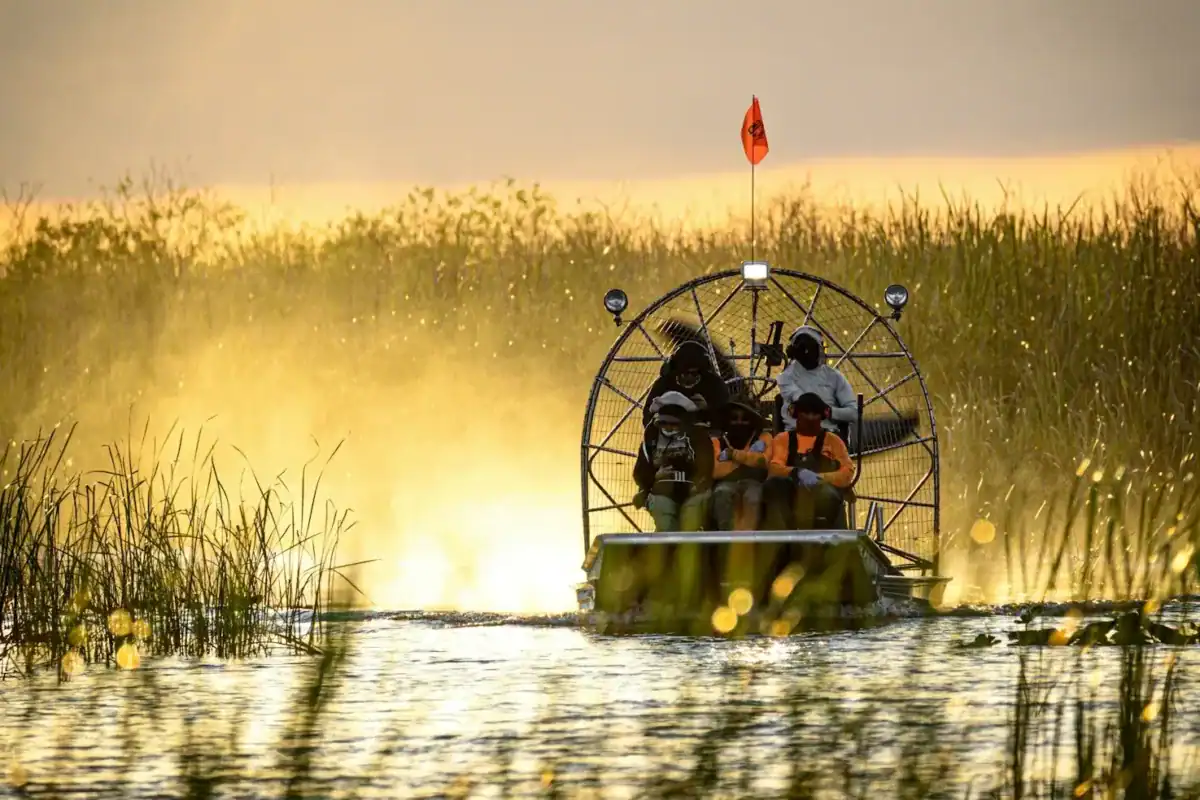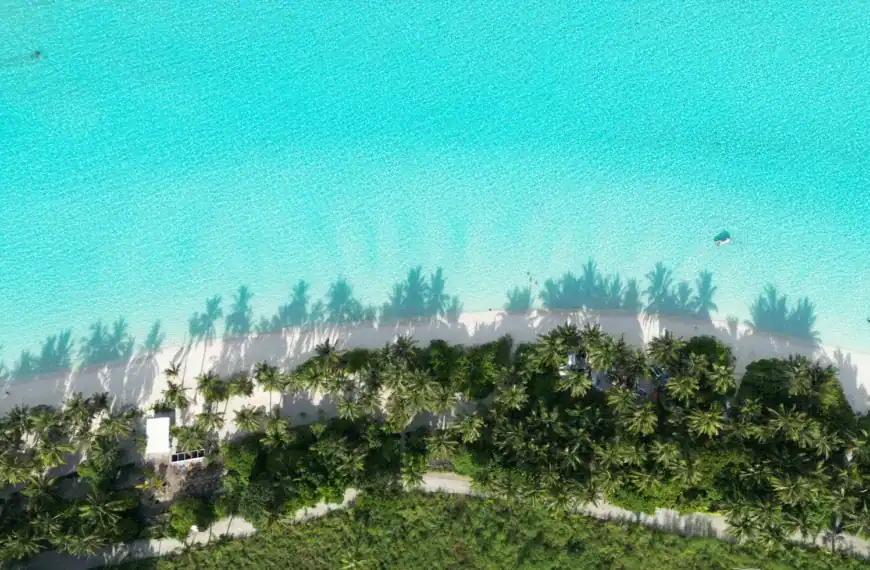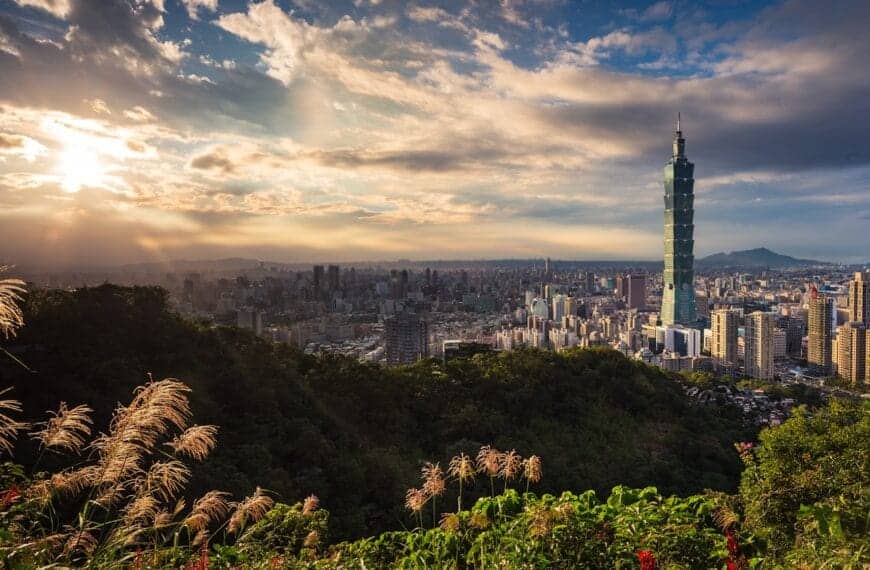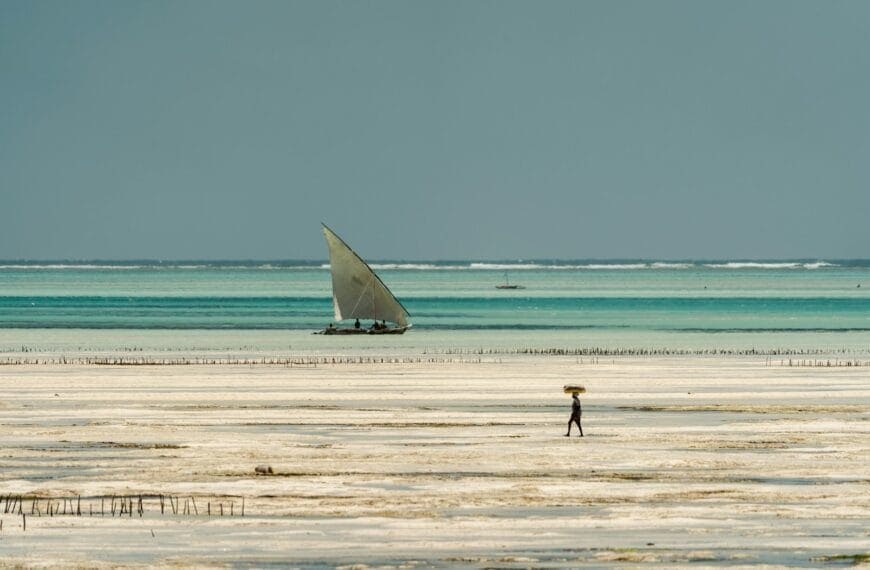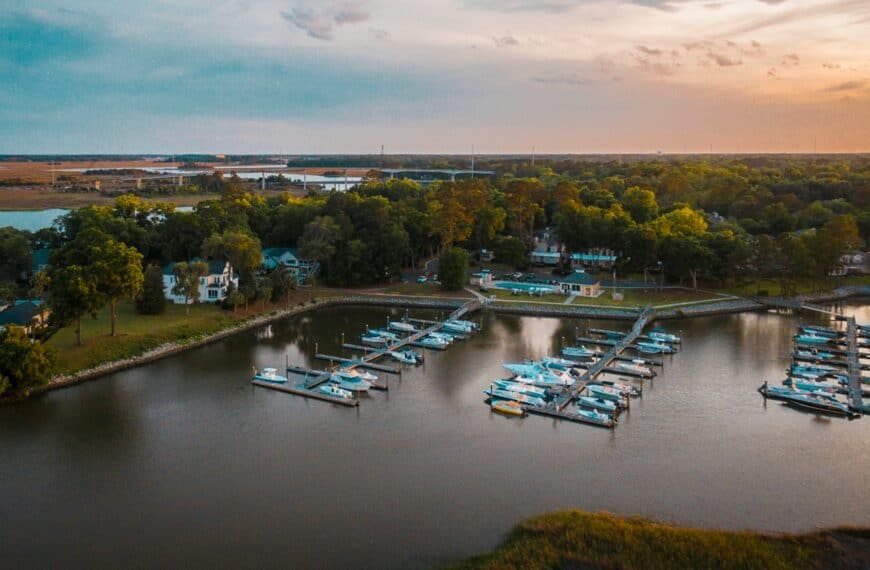Everglades Travel Guide – Florida’s River of Grass
Intro to Everglades Travel Guide
The Everglades is unlike any other place in the United States — a subtropical wilderness where slow-moving rivers feed sawgrass prairies, mangrove forests, and cypress swamps teeming with wildlife. Known as the “River of Grass,” it stretches across 1.5 million acres in southern Florida and is a UNESCO World Heritage Site, a Ramsar Wetland of International Importance, and an International Biosphere Reserve. Visitors come for its iconic airboat rides, birdwatching, and encounters with alligators, but stay captivated by its quiet beauty and ecological richness. Start planning your journey with our Everglades Travel Guide — and discover how guided tours can bring its wetlands, wildlife, and cultural heritage to life.
Nearby destinations to Explore from Everglades
Big Cypress National Preserve | Biscayne National Park | Everglades City | Flamingo | Homestead | Key Largo | Marco Island | Miami | Naples | Shark Valley
💡Quick Facts:
Destination: Everglades
Continent: North America
Country: United States
State: Florida
Area: ~6,106 km² (2,357 mi²) – Everglades National Park
Population: N/A (protected wilderness; surrounding towns include Homestead, Everglades City, Chokoloskee)
Capital/County Seat: Not applicable – spans Miami-Dade, Monroe, Collier counties
Regions/Subregions: Shark Valley, Flamingo, Gulf Coast (Everglades City), Ten Thousand Islands, Big Cypress National Preserve
Official Language: English (Spanish widely spoken regionally)
Currency: US Dollar (USD $)
Time Zone(s): EST (UTC-5), EDT (UTC-4 in summer)
Airports (main/nearest): Miami International (MIA), Fort Lauderdale-Hollywood International (FLL), Southwest Florida International (RSW – Fort Myers), Naples Airport (APF)
Climate: Subtropical; wet season May–Nov, dry season Dec–Apr; hurricane-prone
Known For: Alligators, sawgrass marshes, mangroves, airboat tours, birdwatching, Everglades National Park (UNESCO World Heritage & Biosphere Reserve)
🛂Arrival Info:
Visa/entry: Same as mainland US; ESTA/visa required for non-US citizens.
Park entry: Everglades National Park requires entry fee or National Parks Pass.
Access points: Shark Valley (Miami side), Gulf Coast Visitor Center (Everglades City), Flamingo (south end), Big Cypress (west).
🏥Health Info:
Vaccines: No special requirements beyond US norms.
Hospitals: Facilities in Homestead, Naples, Fort Myers, Miami.
Emergency number: 911.
Risks: Mosquitoes (Zika/dengue risk rare), dehydration, heatstroke, wildlife encounters.
Insurance: Recommended for adventure/airboat activities.
🚑 Check travel insurance options for travel emergencies, delays, and medical needs abroad — Get coverage here
💉 Stay Informed with Official Updates: WHO – International Travel & Health | CDC – Travel health updates
🚨Travel Advisory:
General: Safe, but natural hazards present.
Wildlife risks: Alligators, snakes, panthers; keep distance.
Weather hazards: Hurricanes (Jun–Nov), flooding in wet season.
Roads: US-41 (Tamiami Trail) and Alligator Alley (I-75) cross through Everglades.
🌍Track Real-Time Official Updates: US Travel Advisory | UK Foreign Travel Advice | Government of Canada | NZ SafeTravel
🥳Holidays:
New Year’s Day: Jan 1
Independence Day: Jul 4
Labor Day: Sep (1st Mon)
Thanksgiving Day: Nov (4th Thu)
Christmas Day: Dec 25
Impact: Parks open year-round but busy on holiday weekends.
💰Visitor Info:
Currency: US Dollar (USD).
Payments: Cards accepted at visitor centers; cash useful for small vendors.
Tipping: 15–20% on guided tours.
Duty-free: Not applicable.
Average Daily Budget: $60–120 (budget day-trips), $150–250 (mid-range), $300+ (guided multi-day eco-lodges).
Park fees: $30 per vehicle, valid 7 days.
🛫Airports:
Miami (MIA): Closest major hub (~1 hour to Homestead entrance).
Fort Lauderdale (FLL): ~1.5 hours to Shark Valley.
Southwest Florida (RSW): ~1.5 hours to Gulf Coast Visitor Center.
Naples Airport (APF): Closest small airport for private flights.
🧳 Delayed or canceled flight? Check if you’re eligible for compensation
🚍Transport:
Local: No public transport inside park.
Tourist: Airboat rides, boat tours, kayak/canoe rentals.
Driving: Personal vehicle needed for Shark Valley/Flamingo access.
Cycling: Popular at Shark Valley and some trails.
Trails: Boardwalks, wildlife viewing platforms available.
🚗 Book reliable airport transfers and in-city rides in advance. Reserve your ride here
🛰️Connectivity:
SIM/eSIM providers: AT&T, Verizon, T-Mobile.
Coverage: Weak to nonexistent inside park; good in nearby cities.
Wi-Fi: Visitor centers may offer limited connections.
Roaming: Standard US plans apply.
🛜 Stay connected abroad with affordable eSIM data packs. Get your eSIM here
📜Laws & Etiquette:
Alcohol age: 21.
Wildlife: Feeding or harassing animals strictly illegal.
Dress: Lightweight, long sleeves/pants recommended for mosquitoes.
Etiquette: Stay on marked trails; respect ranger instructions.
Conservation: Carry out all trash; eco-sensitive wetlands protected.
👮Emergency Info:
Emergency number: 911
Park ranger stations: Located at Shark Valley, Flamingo, and Gulf Coast.
Visitor info: Everglades National Park, +1 305-242-7700
Coast Guard: Responds in marine sections of Ten Thousand Islands.
🏛️ Use embassy locator tools: Embassies Worldwide
🌞Weather:
Spring (Mar–May): 24–30°C, dry season ending, best wildlife viewing.
Summer (Jun–Aug): 28–34°C, very humid, daily storms, peak mosquitoes.
Autumn (Sep–Nov): 26–32°C, wet season continues, hurricane risk.
Winter (Dec–Feb): 18–26°C, dry, peak visitor season.
Tip: Best visiting time is dry season (Dec–Apr) when wildlife concentrates near water.
🌦️ Stay prepared—check the weather forecast for your destination — Weather Forecast
Get to Know the Everglades – Main Regions
The Everglades is not one single park but a patchwork of habitats and access points across South Florida.
- Everglades National Park. The largest section of the Everglades, spanning from Miami to the Gulf of Mexico. It includes famous access points like Shark Valley, Flamingo, and Gulf Coast Visitor Centers.
- Big Cypress National Preserve. Located north of Everglades National Park, this area protects cypress swamps and is known for ranger-led swamp walks and off-road eco-tours.
- Shark Valley. A northern entrance with a 15-mile loop road and observation tower. Bike rentals and tram tours make it one of the most accessible wildlife-viewing areas.
- Gulf Coast Visitor Center (Everglades City). The gateway to the Ten Thousand Islands, a labyrinth of mangrove islets best explored by kayak or boat tour.
- Flamingo. At the southern tip of the park, Flamingo offers boating, fishing, and houseboat rentals. It’s a base for spotting manatees, crocodiles, and dolphins.
- Ten Thousand Islands National Wildlife Refuge. South of Everglades City, this marine landscape blends mangroves, tidal creeks, and hidden beaches. It’s popular for paddling and fishing trips.
- Loxahatchee National Wildlife Refuge. Located in Palm Beach County, this refuge protects northern Everglades habitats and is known for birdwatching trails.
Where to Stay Near the Everglades
There are no major cities inside the Everglades, but nearby bases include Miami for Shark Valley, Homestead for Flamingo access, Everglades City for Gulf Coast adventures, and Naples for Big Cypress and Ten Thousand Islands. Rustic campgrounds exist within the park for those seeking wilderness immersion.
Top Attractions & Iconic Sights
Iconic Landscapes
- Shark Valley Observation Tower. Rising 65 feet above the prairie, this tower gives panoramic views of sawgrass marshes dotted with wildlife.
- Anhinga Trail. Near the Homestead entrance, this boardwalk trail is famous for close encounters with alligators, anhingas, herons, and turtles.
- Pa-hay-okee Overlook. A short trail with sweeping views of the “River of Grass,” offering one of the most quintessential Everglades landscapes.
Cultural & Natural Centers
- Ernest F. Coe Visitor Center. The main park entrance near Homestead, offering exhibits, ranger programs, and maps for exploring.
- Big Cypress Swamp Welcome Center. Home to educational displays, rangers, and a boardwalk where manatees gather in winter months.
- Miccosukee Indian Village. An immersive cultural stop on the Tamiami Trail, where visitors learn about the history, traditions, and resilience of the Miccosukee Tribe.
Family Favorites
- Airboat Rides. While not allowed inside Everglades National Park itself, airboat tours operate along the park boundaries. These rides skim across shallow waters, thrilling children and adults alike while showcasing wildlife.
- Tram Tours at Shark Valley. Narrated tram rides make it easy for families to experience the landscape, with stops for wildlife viewing and photography.
- Gumbo Limbo Trail. A shaded trail near Homestead that introduces visitors to hardwood hammocks and native plants, perfect for children and first-time hikers.
Natural Escapes Within and Near the Everglades
The Everglades is nature at its rawest — an ecosystem unlike anywhere else in North America.
- Canoeing the Wilderness Waterway. This 99-mile route stretches from Everglades City to Flamingo, offering a multi-day paddling adventure through mangroves, bays, and backcountry campsites.
- Birdwatching at Loxahatchee. Home to over 250 bird species, this refuge is a paradise for spotting roseate spoonbills, wood storks, and snail kites.
- Fishing in Ten Thousand Islands. Anglers find snook, tarpon, and redfish among mangrove channels. Guided charters ensure sustainable practices while maximizing catches.
- Big Cypress Swamp Walks. Guided by rangers or eco-experts, these immersive hikes take visitors into knee-deep water to experience the swamp’s unique beauty up close.
Book immersive Everglades tours and experience unforgettable things to do in the Orlando — from airboat safaris and swamp walks to kayaking in Ten Thousand Islands and stargazing in Big Cypress.
Culture, History, and Local Identity
- Seminole & Miccosukee Heritage. The Everglades has been home to Native peoples for centuries. Tribal-run tours and cultural centers highlight traditions, crafts, and the fight to protect ancestral lands.
- Pioneer History. Early settlers, hunters, and fishermen shaped parts of the Everglades. Historic structures, like old hunting camps, tell stories of resilience in harsh conditions.
- Conservation Legacy. The Everglades was once considered a “useless swamp,” but today it stands as a global example of restoration and environmental protection. Tours and exhibits explain ongoing efforts to preserve its fragile ecosystem.
Local Food, Markets, and Artisan Vibes
- Everglades City Seafood. Known as the “Stone Crab Capital of the World,” Everglades City celebrates stone crab season each October through May with fresh catches served at local eateries.
- Miccosukee Markets. Visitors can find handmade crafts, beadwork, and traditional foods while learning about Indigenous culture.
- Homestead’s Fruit & Spice Park. Just outside the park, this agricultural showcase features exotic tropical fruits and herbs from around the world.
- Rustic Roadside Diners. Along the Tamiami Trail, family-run diners serve gator bites, fried catfish, and Key lime pie, offering a taste of Florida’s backcountry.
Events, Nightlife, and Seasonal Fun
- Everglades Seafood Festival. Held annually in Everglades City, this festival combines local music, fresh seafood, and community spirit.
- Miccosukee Indian Arts Festival. A cultural gathering with traditional dance, crafts, and storytelling.
- Ranger-Led Night Programs. Seasonal stargazing and moonlight hikes in Big Cypress or Everglades National Park provide a glimpse into the nocturnal side of the wetlands.
- Eco-Festivals in Homestead. The nearby city hosts seasonal eco-events focused on sustainability, food, and local culture.
Where to Base Yourself Near the Everglades
- Homestead. The closest city to the park’s eastern entrances, offering budget stays and easy access to Flamingo and Coe Visitor Center.
- Everglades City. Best for exploring Ten Thousand Islands and Gulf Coast sections. Quaint hotels and fishing lodges dominate here.
- Miami. A convenient urban base, especially for day-trippers heading to Shark Valley or the northern Everglades.
- Naples. Ideal for accessing Big Cypress and western park entrances, while enjoying Gulf Coast luxury.
Insider Tips for Experiencing the Everglades Like a Local
- Visit in winter (Dec–Apr) for cooler temperatures and fewer mosquitoes.
- Bring binoculars — the Everglades is a birder’s paradise.
- Rent a bike at Shark Valley to cover more ground at your own pace.
- Avoid perfumes and scented lotions — they attract insects.
- Support tribal-run tours for authentic experiences that give back to local communities.
Getting Around the Everglades – Transport Tips
- By Car. The park spans huge distances, so driving between entrances is essential.
- By Bike. Shark Valley and some trails are perfect for cycling.
- By Boat or Kayak. The Ten Thousand Islands and Wilderness Waterway are best experienced on the water.
- By Tram or Guided Tour. For those who prefer convenience, trams and guided buses cover popular trails with expert commentary.
Best Time to Visit the Everglades
- Dry Season (Dec–Apr). Cooler weather, fewer bugs, and abundant wildlife make this the ideal time to visit.
- Wet Season (May–Nov). Afternoon storms, high humidity, and mosquitoes are common, but landscapes turn lush and fewer crowds mean quieter trails.
- Wildlife Seasons. Bird migrations peak in winter, while manatees and alligators are easiest to spot during cooler months.
- Event Seasons. Festivals like the Seafood Festival add cultural highlights to winter visits.
Planning Your Stay in the Everglades – Practical Tips
- Pack light but include long sleeves and insect repellent for bug protection.
- Stay hydrated — carry plenty of water even on short trails.
- Book guided tours in advance during peak season.
- Cell service is limited — download maps offline.
- Respect wildlife — keep safe distances from alligators and nesting birds.
- Loop Road Scenic Drive. A rustic, unpaved drive through Big Cypress with abundant wildlife viewing opportunities.
- Mahogany Hammock Trail. A boardwalk through tropical hardwood forests with one of the largest mahogany trees in the U.S.
- Turner River Paddle Trail. A kayaking route through mangroves, cypress, and open prairies, beloved by paddlers.
- Chekika Day Use Area. A less-visited section of the park where picnics and birdwatching feel far from the crowds.
Nearby Destinations to Explore
- Miami. A vibrant city offering nightlife, art, and dining just east of the Everglades.
- Naples. A Gulf Coast base with beaches, luxury dining, and access to Big Cypress.
- Florida Keys. South of the Everglades, the Keys offer diving, coral reefs, and laid-back charm.
- Fort Lauderdale. A mix of beaches, canals, and culture less than two hours away.
- Marco Island. Perfect for pairing Gulf Coast relaxation with Ten Thousand Islands adventures.
Final Tips for a Smart Everglades Adventure
- Always carry insect repellent and sunscreen — conditions change quickly.
- Start early in the morning for cooler hikes and more wildlife sightings.
- Bring cash for small roadside stops and tribal markets.
- Use eco-certified tour operators for sustainable experiences.
- Allow time for both wetland and coastal areas to see the Everglades’ full diversity.
Plan Smarter, Travel Better
Exploring the Everglades means balancing preparation with flexibility. Pack essentials like bug spray, sun protection, and water, but leave room in your itinerary for spontaneous wildlife encounters. Guided tours reveal hidden insights, while self-guided trails let you connect at your own pace.
Choose Your Next Adventure
- Naples. Gulf Coast luxury, beaches, and cultural escapes close to Big Cypress.
- Miami. Art, nightlife, and Cuban heritage just a short drive from Shark Valley.
- Florida Keys. Island-hopping road trips, snorkeling reefs, and laid-back charm.
- Orlando. A family-friendly hub of theme parks several hours north.
It’s Time to Experience the Everglades
The Everglades is more than a swamp — it’s a living, breathing wilderness where water, land, and sky intertwine. From iconic airboat rides to serene kayak trails, it delivers adventure, culture, and natural wonder in equal measure. Whether you base yourself in Miami, Naples, or Everglades City, this Florida treasure deserves a place on every traveler’s itinerary. Discover more Florida destinations and travel ideas with our guides.

